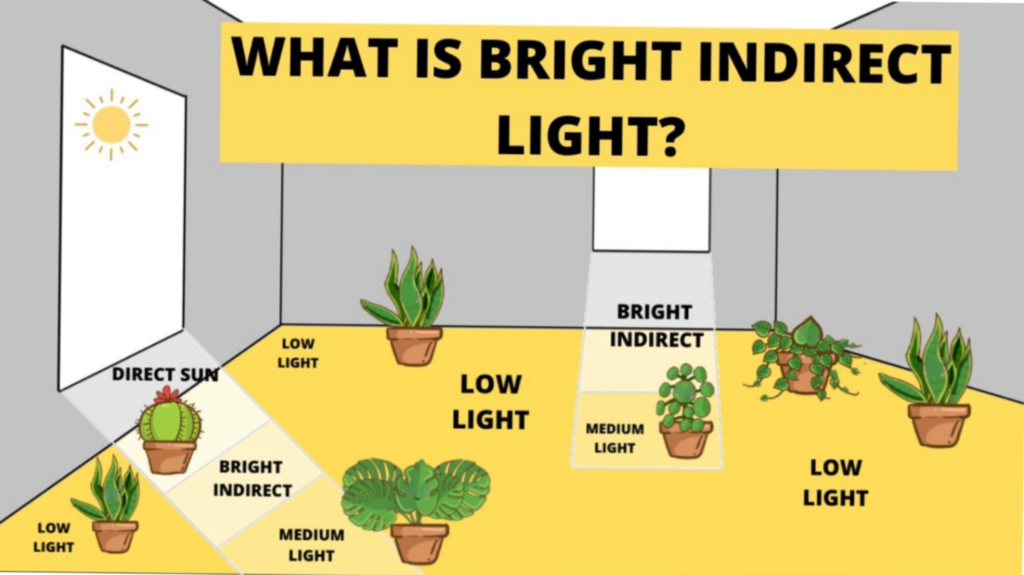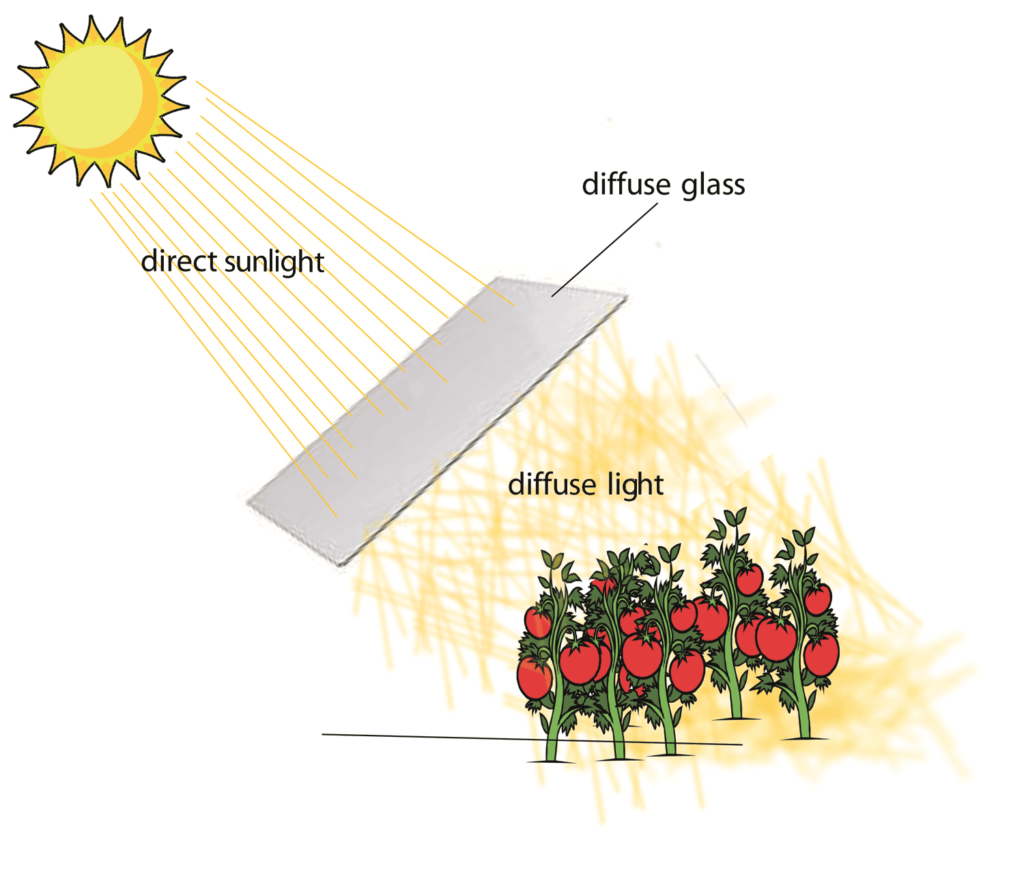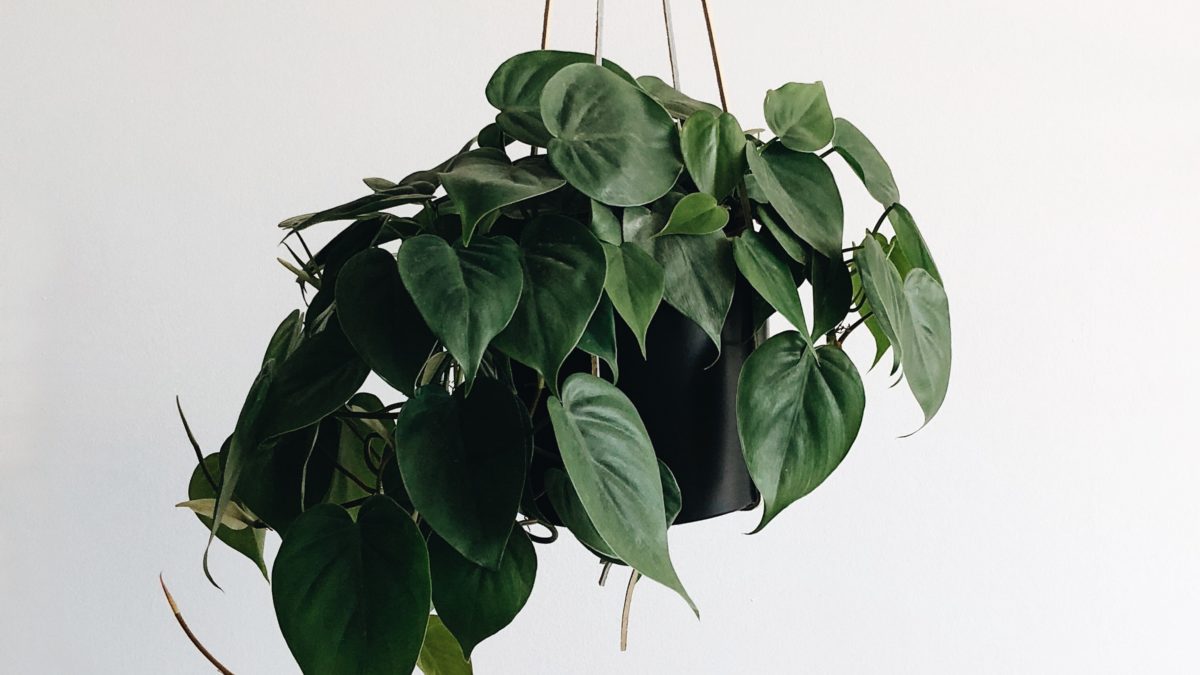“Not all plants need direct sunlight to grow. In fact, there are many plants that prefer indirect sunlight or partial shade.”
If you want to grow healthy plants, give them plenty of indirect sunlight.
If you’re looking to add some greenery to your home but don’t have a lot of space or direct sunlight, don’t worry! There are plenty of plants that can thrive in indirect sunlight. In this blog post, we’ll share some of our favorite plants that grow well in shady areas.
What Is Indirect Sunlight?
Indirect sunlight is light that does not shine directly on an object. Instead, it reflects off of surfaces like walls or floors before reaching the object. This makes indirect sunlight much dimmer than direct sunlight.
Indirect sunlight is often used in gardens or greenhouses because it can help plants grow without causing them to dry out or get sunburned.
There are a few things to keep in mind when growing plants in indirect sunlight. First, indirect sunlight can, in some circumstances, be more harmful than direct sunlight, so plants may still need to be watered frequently. Second, plants that are used to direct sunlight may not do well in indirect sunlight, so it is important to choose plants that can tolerate lower light levels.
Overall, indirect sunlight is a good option for people who want to grow plants indoors or in shady areas. It can help plants to grow healthy and strong, without being damaged by the sun.

The Benefits Of Indirect Sunlight
Indirect sunlight is when the sun’s rays hit a surface and then reflect off of it onto another surface. This is opposed to direct sunlight, which is when the sun’s rays hit a surface directly.
There are many benefits to growing plants in indirect sunlight. One benefit is that it can help to prevent sunburn. Sunburn can damage a plant’s leaves, causing them to turn brown or black. It can also make the plant’s leaves fall off.
Another benefit of growing plants in indirect sunlight is that it can help to prevent dehydration. Dehydration happens when a plant’s leaves lose too much water. This can happen when the sun’s rays hit the leaves directly, causing the water to evaporate.
Indirect sunlight can also help to prevent pests and diseases. Pests and diseases can damage a plant and make it more difficult for it to grow.
Overall, indirect sunlight is a great way to grow plants. It can help to prevent sunburn, dehydration, and pests and diseases. So if you’re looking for a way to grow healthy plants indoors, definitely explore options for indirect sunlight.
The Different Types Of Indirect Sunlight
There are three types of indirect sunlight: diffused, reflected, and shaded. Each type can have different effects on houseplants.

Diffused sunlight is when the sun’s rays are scattered by clouds or haze. This type of sunlight is not as intense as direct sunlight and is considered safer for most houseplants.

Reflected sunlight is when the sun’s rays bounce off of surfaces like water or snow. This type of sunlight can be just as intense as direct sunlight, so be careful not to expose your plants to too much reflected sunlight.

Shaded sunlight is when the sun’s rays are blocked by objects like buildings or trees. This type of sunlight is the safest for houseplants, but some plants may not grow well in shaded sunlight.
Now that you know the different types of indirect sunlight, you can choose the right spot for your houseplants. Place them in an area where they will get the type of sunlight they need to thrive.
The Best Plants For Indirect Sunlight
When it comes to houseplants, there are a lot of different options to choose from. But not all plants do well in direct sunlight. If you have a spot in your home that doesn’t get a lot of light, you’ll need to pick plants that can thrive in low-light conditions.
Here are some of the best plants for indirect sunlight:
1. Snake Plant
Also known as the mother-in-law’s tongue, the snake plant is a tough plant that can tolerate low light and neglect. It’s a great choice for beginners, since it’s very easy to care for. Snake plants can grow quite tall, so if you have a small space, you can choose a smaller variety.
2. Philodendron
Philodendrons are a classic houseplant that are very easy to care for. They’re perfect for beginners or anyone who doesn’t have a lot of time to dedicate to plant care. Philodendrons do well in low light, but they can also tolerate some direct sun.
3. Pothos
Pothos is another easy-care plant that is perfect for beginners. It’s a vine plant, so it can be trained to grow up a trellis or pole. Pothos do well in low light, but they can also tolerate some direct sun.
4. Peace Lily
Peace lilies are beautiful plants that bloom white flowers. They do best in low light, but they can also tolerate some direct sun. Peace lilies need to be watered regularly, so make sure to keep an eye on the soil and water when it starts to dry out.
5. Dracaena
Dracaenas are a family of plants that come in a wide range of sizes and colors. They’re perfect for adding a splash of color to a low-light room. Dracaenas do best in low light, but they can also tolerate some direct sun.
6. Ficus
Ficus are a classic houseplant that come in a wide range of shapes and sizes. They’re perfect for filling up a large space in a low-light room. Ficus do best in low light, but they can also tolerate some direct sun.
7. Schefflera
Schefflera are a family of plants that come in a wide range of sizes and colors. They’re perfect for filling up a large space in a low-light room. Schefflera do best in low light, but they can also tolerate some direct sun.
8. ZZ Plant (Zamioculcas)
ZZ plants are a tough plant that can tolerate low light and neglect. They’re perfect for beginners or anyone who doesn’t have a lot of time to dedicate to plant care. ZZ plants do best in low light, but they can also tolerate some direct sun.
9. Spider Plant
Spider plants are a classic houseplant that are very easy to care for. They’re perfect for beginners or anyone who doesn’t have a lot of time to dedicate to plant care. Spider plants do well in low light, but they can also tolerate some direct sun.
The Worst Plants For Indirect Sunlight
There are some plants that just don’t do well in indirect sunlight. They either need full sun to thrive or they’ll get leggy and sad-looking if they don’t get enough light. If you’re looking for plants that will do well in indirect sunlight, steer clear of these varieties:
- Cacti
- Geraniums
- New Guinea impatiens
- Petunias
- Sunflowers
- Tomatoes
- Zinnias
Essential Tips for Thriving Plants in Low-Light Environments
Plants need sunlight to grow, but not all plants need direct sunlight. Some plants do just as well, or even better, in indirect sunlight. If you have a spot in your house or garden that gets indirect sunlight, you can grow a variety of plants there. Here are some tips on how to care for plants in indirect sunlight.
Watering
One of the most important things to remember when caring for plants in indirect sunlight is to not over-water them. This is because the soil in indirect sunlight dries out more slowly than in direct sunlight. Over-watering can cause the roots to rot. Stick your finger in the soil to check if it is dry before watering.
Fertilizing
Plants in indirect sunlight may not need to be fertilized as often as plants in direct sunlight. This is because indirect sunlight helps the plant to grow more slowly. When you do fertilize, use a light fertilizer or one specifically for plants that grow in indirect sunlight.
Pruning
Pruning is important for all plants, but especially for plants in indirect sunlight. This is because pruning helps the plant to direct its energy to the parts that are getting the most light. When pruning, cut off any dead or dying leaves or branches.
With these tips, you can successfully grow a variety of plants in indirect sunlight. Just remember to not over-water, fertilize lightly, and prune regularly.
The Different Ways To Get Indirect Sunlight
Indirect sunlight is essential for many indoor plants. But what exactly is indirect sunlight? And what are the best ways to get it for your plants?
Indirect sunlight is simply light that doesn’t directly reach the plant. It can be filtered through a sheer curtain, bounce off a wall, or come from a north- or east-facing window. As long as the light isn’t hitting the plant directly, it’s considered indirect.
There are a few different ways you can get indirect sunlight for your plants:
- Place your plants near a north- or east-facing window.
- Hang sheer curtains in front of south- and west-facing windows.
- Use a reflective surface, like a mirror, to bounce light onto your plants.
- Move your plants around periodically so that they all get a chance to receive indirect sunlight.
Whichever method you choose, make sure your plants are getting the indirect sunlight they need to thrive!
The Pros And Cons Of Indirect Sunlight
Indirect sunlight is when the sun’s rays bounce off of a surface before reaching your plants. This can be beneficial for plants that require bright light but can’t handle direct sunlight. However, indirect sunlight can also be a problem for some plants. Here are some pros and cons of growing plants in indirect sunlight:
Pros:
- Indirect sunlight is often more gentle and less intense than direct sunlight, making it ideal for plants that need lots of light but can’t handle the harshness of direct sunlight.
- Indirect sunlight can help prevent sunburn and other damage that can be caused by direct sunlight.
- Indirect sunlight can help prevent leaves from yellowing or wilting in hot weather.
- Indirect sunlight can help prolong the blooming period of flowers.
Cons:
- Indirect sunlight is often less intense than direct sunlight, which can be a problem for plants that need lots of light to thrive.
- Indirect sunlight can cause plants to stretch and become leggy as they try to reach for the light.
- Indirect sunlight can make it difficult for plants to produce flowers and fruits.
- Indirect sunlight can cause mottling and spotting on leaves.
How To Use Indirect Sunlight To Your Advantage
If you want to take advantage of indirect sunlight, there are a few things you can do. First, try to position your plants so that they get some morning sun and some afternoon sun. This will give them a chance to soak up the sun’s rays without being in the direct path of the sun’s heat.
Another way to take advantage of indirect sunlight is to choose plants that thrive in shady conditions. There are many plants that do not need direct sunlight to grow and prosper. Some examples of these plants include ferns, impatiens, and begonias.
Finally, you can use reflective materials to bounce light onto your plants. This can be especially helpful if you have a north-facing window. By using a mirror or other reflective surface, you can brighten up a shady spot and help your plants get the light they need.
So there are a few ways you can take advantage of indirect sunlight. By positioning your plants carefully, choosing the right plants, and using reflective materials, you can make sure your plants get the light they need to grow and thrive.
Quick Tips
- Look for plants that thrive in shady or low-light conditions.
- Be mindful of the amount of water your plant needs.
- Consider adding a grow light to supplement your plant’s light needs.
- Choose a spot in your home that has indirect sunlight.
- Keep an eye on your plant and make sure it’s getting the light it needs.
- Be prepared to adjust your plant’s light needs as the seasons change.
- Don’t forget to give your plant some love and attention!
Frequently Asked Questions
Q 1: What is indirect sunlight for indoor plants?
Indirect sunlight is light that doesn’t directly reach the plant but instead bounces off surfaces like walls or floors, providing a softer, diffused light.
Q 2: Which plants thrive in indirect sunlight?
Plants like Snake Plants, Pothos, Peace Lilies, and Philodendrons thrive in indirect sunlight, as they are adapted to lower light conditions.
Q 3: Can indoor plants survive without direct sunlight?
Yes, many indoor plants can survive and even thrive in indirect sunlight. These plants are adapted to lower light environments and grow well in shaded or partially lit areas.
Q 4: How can I create indirect sunlight for my plants at home?
You can create indirect sunlight by placing plants near a north- or east-facing window, using sheer curtains, or using reflective surfaces like mirrors to redirect light.
Q 5: How often should I water plants in indirect sunlight?
Plants in indirect sunlight generally require less water than those in direct light. Be sure to check the soil regularly, watering when the top inch is dry to the touch.
Conclusion
Just because a plant prefers indirect sunlight doesn’t mean it won’t do well in direct sunlight. Plants can adapt to their environment, so if you have a plant that’s not doing well in direct sunlight, try moving it to a spot where it will get some indirect sunlight during the day. With a little trial and error, you can find the perfect spot for your plants, whether they prefer direct or indirect sunlight.
Michelle Wilde
Related posts
6 Comments
Leave a Reply Cancel reply
![]()
About Michelle Wilde
Michelle Wilde is a stay-at-home mom and avid plant lover. Armed with a post-graduate degree in Computer Science (no kidding!), she loves researching plants and landscapes. When she is not caring for her 4 kids, she spends time on her passion for plants. She blogs at www.indoorplantschannel.com, the trusted source for indoor plants.
Learn more
Subscribe
* You will receive the latest posts and updates about indoor plants!
Search
Recent Posts
Categories
- Beginner Guides (10)
- FAQ (206)
- General (2)
- How-To Guides (212)
- Indoor Plants (214)
- Pest Management (2)
- Plant Problem Solutions (4)
- Seasonal Growing (2)
- Specialized Environments (2)
- Specific Plant Care (3)
- Technical Growing (2)

[…] If you want to add some greenery to your home but don’t have a lot of direct sunlight, don’t worry! There are plenty of plants that thrive in indirect sunlight. […]
[…] your plants have rooted and started to grow, you can transplant them into larger […]
[…] is also more diffuse, meaning that it spreads out over a larger area. This can be beneficial for plants that are trying to grow in shady areas. The diffused light will help the plant evenly distribute its […]
[…] Aloe vera is a succulent plant often used for its medicinal properties. The gel from the plant can be used to treat burns and wounds. Aloe vera requires little maintenance and can withstand long periods of neglect. The plant grows best in bright, indirect sunlight. […]
[…] vera plants prefer bright, indirect sunlight. You can place it near a window where it will get plenty of light without being in direct […]
[…] sun can scorch their leaves. Keep your Begonia in a spot where it can receive at least 4-6 hours of indirect sunlight each […]